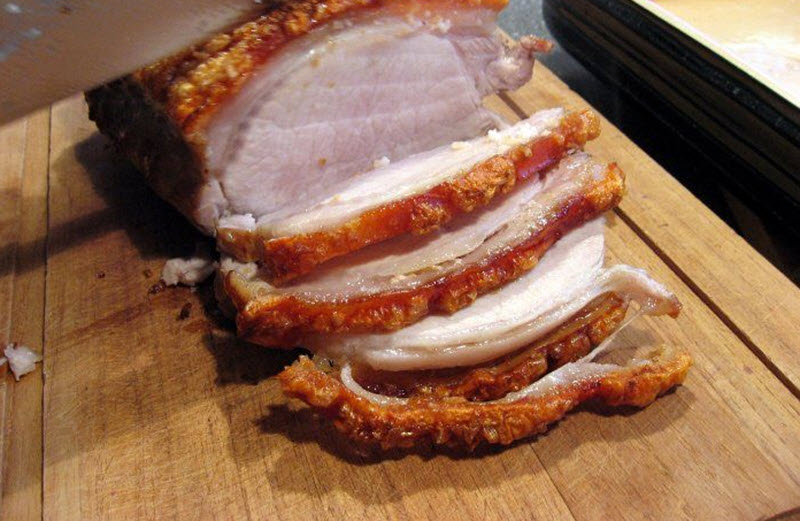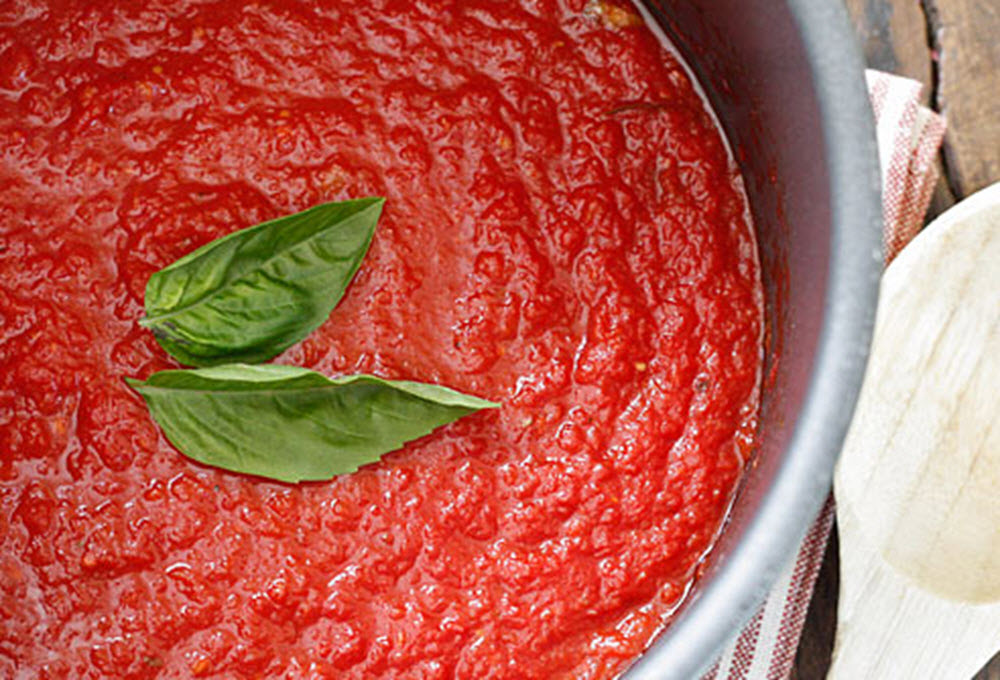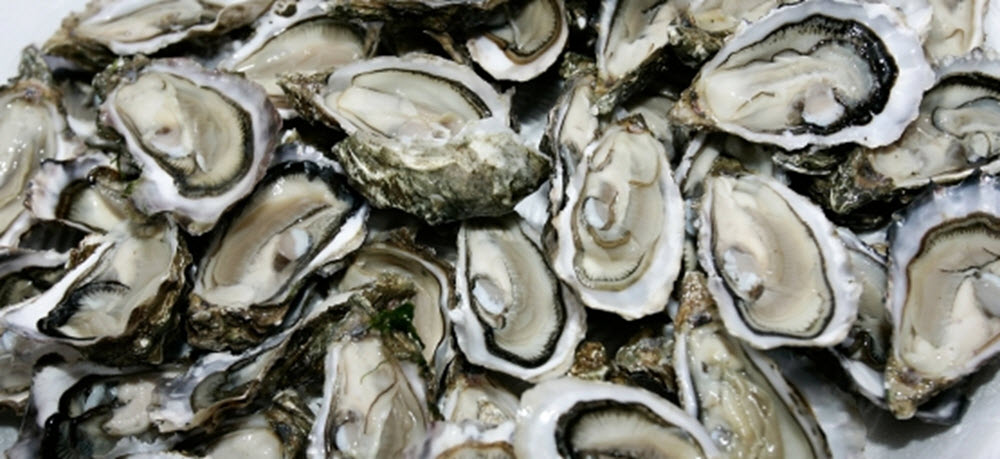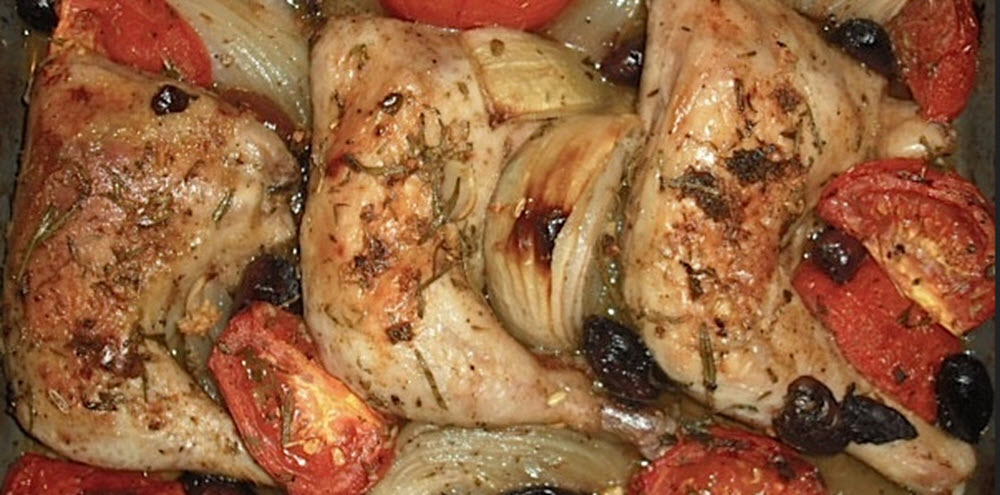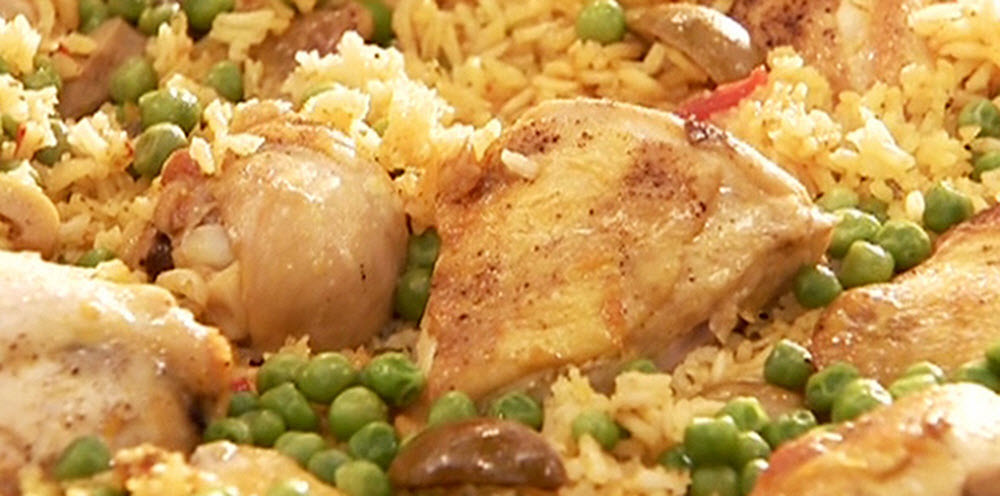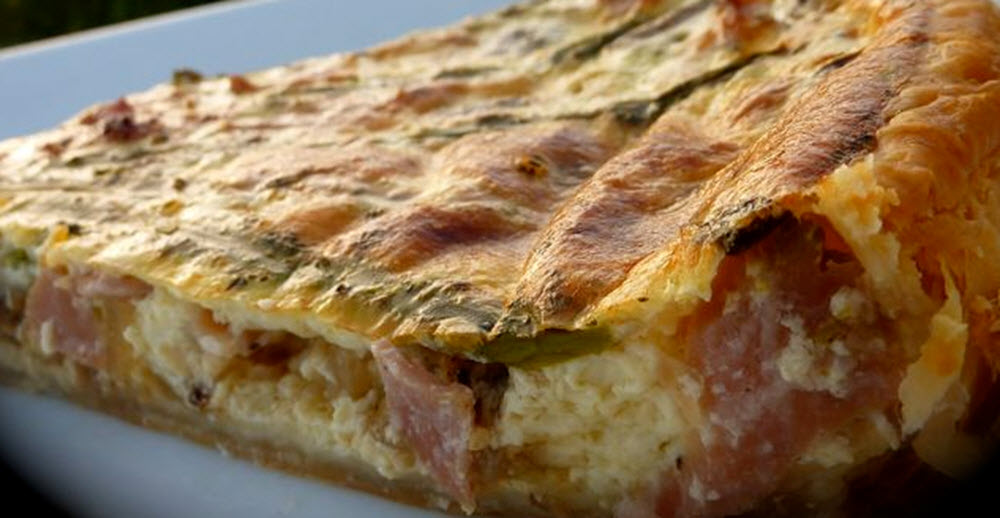Flæskesteg is a Danish roast pork prepared with crackling. In many Danish families, it is enjoyed on Christmas Eve together with boiled potatoes, pickles, beets and mustard. The left over pork and crackling is then used to prepare open sandwiches during the next day or days. There is for instance the flæskesteg med rødkål where the pork and crackling is served on dark Danish-style rye bread together with red cabbage. If you have the energy, decorate the sandwich with prunes, pickled cucumber and a slice of orange.
Flæskesteg recipe
This recipe is intended to serve 2 people and leave a lot of left-overs for making delicious sandwiches the next day.
Ingredients
- 1 slab of pork tenderloin, weighing approximately 2.5 lbs. It should have both rind and fat intact.
- 2 tablespoons of salt
- 1 teaspoon of whole dried cloves
- Freshly cracked black pepper
- Whole bay leaves
Instructions
- Preheat the oven to 450 degrees F.
- Pat the pork slab dry.
- Use a sharp knife to make ½-inch incisions into the rind and halfway down the fat.
- In a small bowl, mix 2 tablespoons of salt with the cloves. Rub the mixture all over the pork, and push the cloves into the pork to make them stick. Finish with a light shower of the black pepper.
- Insert whole bay leaves here and there into the cuts. It’s up to you how many you wish to use. You can also add some extra cloves at this stage if you’d like a more intense clove flavor.
- Roast the pork in the oven for 30 minutes. The high temperature is necessary to achieve the proper crackling.
- Lower the heat to 350 degrees F.
- Boil 3 cups of water and add it to the roasting pan in the oven.
- Cook until done to your likeness; expect it to take approximately half an hour.
- Turn off the oven and leave the pork inside to rest for 10 minutes.
- Serve with boiled potatoes, pickles, beets and mustard.
Trivia
Pork has been a Danish favorite since time immemorial, but oven-baked pork didn’t really become a staple in ordinary Danish families until the Industrial Revolution brought wood-fired metal ovens into the Danish homes, replacing the traditional hearth.

